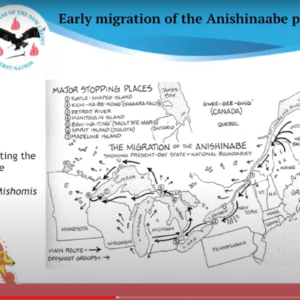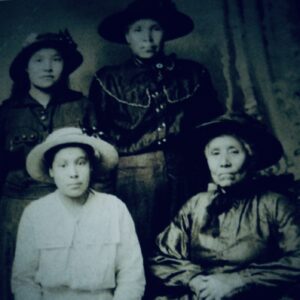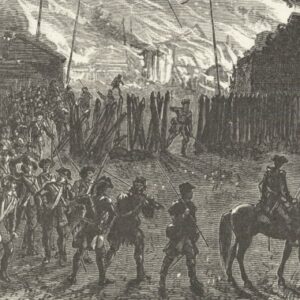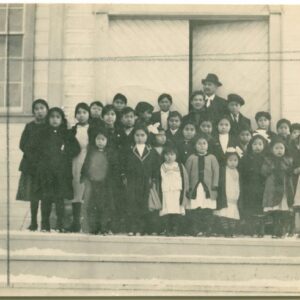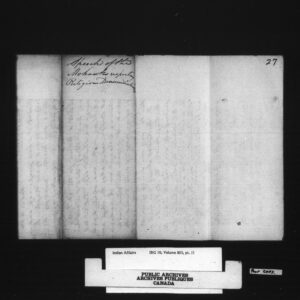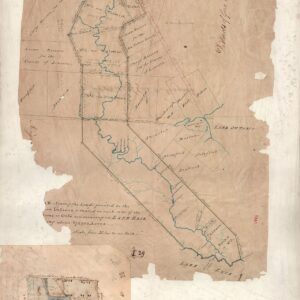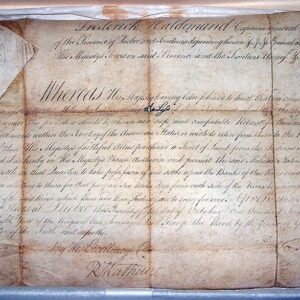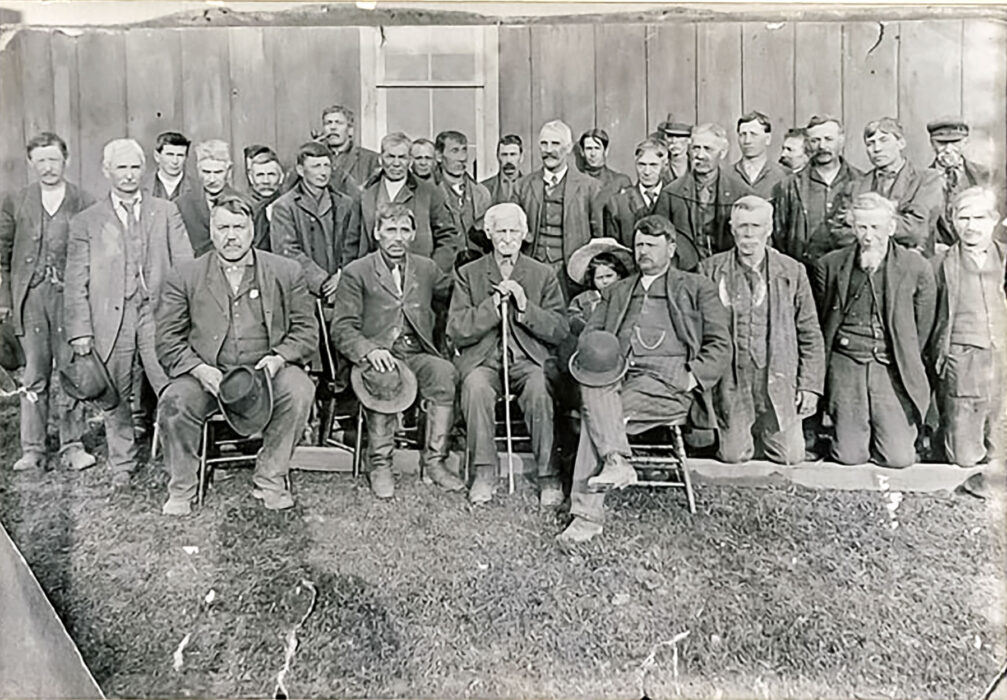
November of 1924 marks a date which all Six Nations and allied nations need to remember as when Canada, with the support of Britain, assumed governance over a free and autonomous people.
Whether a proponent of the traditional Confederacy Chiefs Council or a supporter of the British patterned Elective System, knowing what led up to change may be as important as the changeover itself.
Minutes and written communications between the British Canadian government and the Confederacy Chiefs serve as invaluable resources when seeking an understanding of the dynamics between two opposing styles of governance in those historic days.
In this series of articles we will take a deeper dive into the question of what led up to the RCMP raid on Six Nations one hundred years ago.
The first record of the governance question being spoken about was as far back as 1867, when the Confederation Act transferred the responsibility of Canada’s First Nations people in the hands of the new, fledging nation of Canada.
Up until then, the Haudenosaunee Warriors were essential against the United States in their War of Independence in 1776, and the failed invasion of Canada in 1812. Britain was already locked in a war against Napoleon in France as well as the maintenance of other colonies in its possession. With forces spread thin across the globe, it was these allied First Nations who made the difference between Canada’s survival and its absorption into the new United States of America.
Once the threat of attack was over, Six Nations value to the Crown waned and the promises made to Britain’s “faithful Indian Allies” became more of a liability than an asset. To secure their support in both American wars, the Crown “guaranteed” the Haudenosaunee would be properly compensated if their lands were lost while fighting on behalf of Britain.
That is the way it stayed for decades with the Confederacy Chiefs continuing to manage the affairs of its people with the support protection and oversight of the Crown, supposedly acting on the Haudenosaunee’s behalf.
Canada was reluctant to interfere in Six Nations business and paid little attention to the complaints of some of its residents who longed for the prosperity of their euro-Canadian neighbours. Meanwhile the times were changing and as Canada began to emerge under British oversight, honouring the treaties and promises became less and less important compared to Canada’s own ambitions.
Indigenous relations efforts were no longer seen as essential and the treaties that were supposed to keep the two parties independent and separate from each other while, at the same time, remaining close allies in times of trouble.
The steady erosion of trust over the subsequent years, along with the allure of the Canadian society quickly surrounding them caused some to abandon their traditional values and seek acceptance among their new Canadian brothers and become enfranchised. However, most remained loyal to their traditional ways.
This growing chasm between members of the Grand River Haudenosaunee continued to widen as WWII broke out in Europe in September of 1939. Many Six Nations and Mississauga men and women volunteered to fight under the Union Jack of England and were immersed in Canadian culture and values reshaping their world view.
It is also noted that Canada’s policy toward First Nations had morphed into a policy of all out assimilation. Volunteer or forced, it didn’t really matter to the likes of Minister of Indian Affairs, Duncan Campbell Scott who espoused the mantra, “kill the Indian, save the child,” in his oversight of the residential school system.
We assume too often that everyone living in Canada would know most, if not all of this already, but we can’t take that for granted. A younger generation may not have been given this information and enter adulthood without a proper foundation of who they are. Things that we take for granted soon loose their importance and ultimately disappear from the national memory.
With this very basic information above as a foundation, we will begin our deeper dive into the paper trail which led to a climax in the winter of, 1924 with Canada’s intervention upon Six Nations.
The following is a declaration of independence which was made in response to that action which made their centuries old government model was now declared illegal by the Crown. Using the wording from the American Constitution, the following counter-declaration was issued on behalf of the Confederacy.
DECLARATION OF INDEPENDENCE. THE CONFEDERACY OF SIX NATIONS (IROQUOISI OF THE GRAND RIVER
By Authority of Minister of Justice, Detroit, Michigan, U.S.A.
A declaration by the representatives of the separate and independent aborigines, Iroquois people of North America known as and constituting the Confederacy of the Six Nations of the Mohawks, The Oneidas, The Cayugas, The Senecas, The Onandagas and the Tuscaroras, (hereinafter designated as the ” Six Nations.” In council assembled.) Passed the 19th day of June, 1928. When in the course of human events it becomes necessary for one people to dissolve the political bands which have connected them with another and to assume among the powers on earth the separate and equal station to which the laws of nature and of nature’s God entitle them a decent respect to the opinions of mankind, requires, that they should declare the causes which impel them to the separation.
We would hold these truths to be self-evident: That all men are created equal; that they are endowed by the Creator with certain inalienable rights; that among these rights are life, liberty and the pursuit of happiness. That to secure these rights, governments are instituted among men, deriving their just powers from the consent of the governed; that whenever any form of government becomes destructive of these ends it is the right of the people to alter or to abolish it, and to institute a new government laying its foundations on such principles and organizing its powers in such form as to them shall seem more likely to affect their safety and happiness. Prudence indeed will dictate that governments long established should not be changed for light and transient; and accordingly, all experience hath shown that mankind are more disposed to suffer, while evils are sufferable, than to right themselves by abolishing the forms to which they are accustomed. But when a long train of abuses and usurpations pursuing invariably the same object evinces a design to reduce them under absolute despotism, it is their right—it is their duty, to throw off such government and to provide new guards for their security. Such has been the patient suffering of the Six Nations, and such is now of necessity that which constrains them to alter their former systems of government. The history of the past and present sovereigns and governments of England and of the Six Nations is a repeated history of injuries and usurpations, all having in direct object, the establishing of an absolute tyranny over our peoples. To prove this let facts be submitted to a candid world. Incidental to the revolution of the British Colonies in America against British rule, the Six Nations were more closely involved than any other of the aborigines peoples. The British Colony of Canada on the north of the lakes remained loyal to the Crown, whilst those on the south revolted. The Six Nations domain lay between them; and strife to secure the Six Nations’ friendship immediately began between the contestants.
In the end the more powerful of the Six Nations people became active allies of the British against the revolting Colonies.
The Mohawks being nearest the colonies frontiers, were the earliest to be involved, and took the initiative to secure guarantees from the British, as protection against eventualities. The Mohawks applied, accordingly, to Sir Guy Carlton, commander of the British forces in Canada and were assured by him that the British would make good any losses that the Mohawks and their friends might sustain. Feeling secure in that promise, the Mohawks and others of Six Nations joined heartily on the British side. Later they felt it prudent to have that promise reduced to writing and this was done by Governor Haldimand successor to Carlton by written pledge and on the 7th of April, 1779, Governor Haldimand delivered to Six Nations the following document: ” By his Excellency General Haldimand, Esq., Captain General and Commander-in-chief of the Province of Quebec and upon the frontiers of Quebec et cetera. Some of the Mohawks of the villages of Canopharie, Tikondarago and Aughuago whose settlements then had been on account of their steady attachment to the King’s service and the interests of government ruined by the rebels ; having informed me that my predecessor Sir Guy Carlton was pleased to promise as soon as the present troubles were at an end, the same should be restored at the expense of the government to the state they were in before these hostilities broke out, and said promise appearing to be just ; I do hereby ratify the same and assure them the said promise so far as in me lies, shall be faithfully executed as soon as that happy time comes. ” Given under my hand and seal at Quebec the 7th, April, 1779.
(Signed), FRED HALDIMAND.”
This too was filed and subsequently ignored.
-30-





